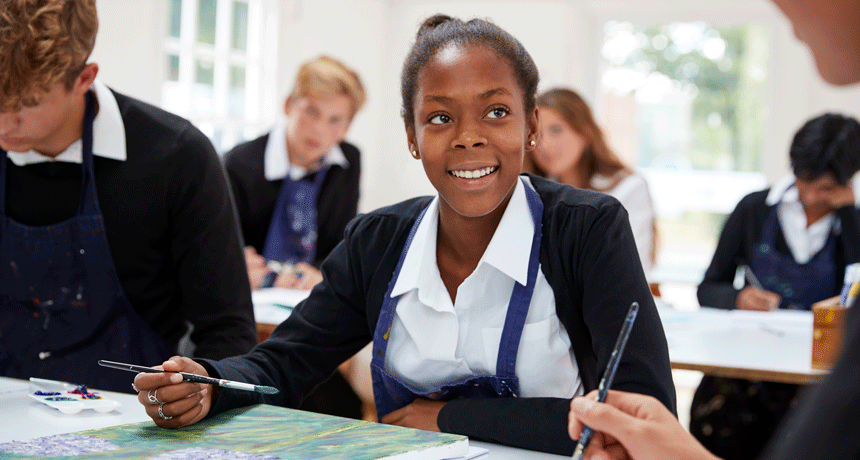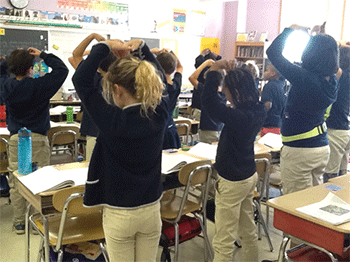Art can make science easier to remember
Using art in science class helped students retain what they learned longer

Using painting to illustrate science concepts may help cement the new knowledge, a new study suggests.
monkeybusinessimages/iStock/Getty Images Plus
Art and science may seem like polar opposites. One involves the creative flow of ideas, and the other cold, hard data — or so some people believe. In fact, the two have much in common. Both require a lot of creativity. People also use both to better understand the world around us. Now, a study finds, art also can help students remember better what they learned in science class.
Mariale Hardiman is an education specialist at Johns Hopkins University in Baltimore, Md. Back when she was a school principal, she had noticed that students who used art in the classroom were more engaged. They might listen more intently. They might ask more questions. They might volunteer more ideas. What’s more, students seemed to remember more of what they had been taught when their lessons had involved art. But Hardiman knew the only way to test whether and how well art might really improve learning was to test it with an experiment. So she teamed up with other Johns Hopkins researchers and six local schools.
The researchers worked with teachers in 16 fifth-grade classrooms. The scientists took the traditional science lessons and created art-focused versions of them.
In a traditional science classroom, for instance, students might read aloud from a book. In the art-focused class, they might now sing or rap the information instead. Another example: Traditional science classes often use charts and graphs. The art classrooms instead had students create collages and other types of art. Everyone would get the same information —just learn it in different ways.
The team then randomly assigned each of the 350 students to either a traditional science classroom or an art-focused one. Students then learned science using that approach for the entire unit — about three weeks. When they switched to a new topic, they also changed to the other type of class. This way, each student had both an art-focused class and a standard one. Every unit was taught both ways, to different groups of students. This let the researchers see how students did in both types of classes.

Before and after each phase of the experiment, students took tests. They took a third one 10 weeks later. This one measured how well they still remembered what they learned two months earlier. The research team also looked at how well each student performed on the state reading test. This let them compare how art and non-art classrooms affected students with different types of learning abilities.
Students who read at or above their grade level did just as well in both types of classes. Those who had lower reading scores gained much more of the science if it had been taught in an art-focused class.
In some cases, Hardiman says, kids actually performed better in the third test, months later, than in those taken earlier. And classroom teachers reported “that many students continued to sing the songs or raps that they learned after finishing the unit,” Hardiman notes. “The more we hear something, the more we retain it,” she says.
Students who started off in regular classes performed better after they moved into an art-focused class. But those who started in an art-focused class did well even when they switched back to a regular science class. Says Hardiman, these students appeared to use some of the art techniques after switching back to a traditional class. “Some continued to sketch or sing to help them retain information,” she notes. “This suggests that the arts may help students apply creative ways of learning on their own.”
Her team shared its results February 7 in Trends in Neuroscience and Education.
The study takes art as a method of science learning very seriously, says Jaime Martinez. He’s a science, technology, engineering, arts and math (STEAM) specialist at the New York Institute of Technology in New York City. He was not involved with the study. It’s understandable that the authors might interpret their new results as a useful approach for helping struggling readers, he says. But he also thinks there’s a broader benefit to using arts in the classroom. Researchers and teachers find that students in art-focused classes develop more creativity and learn to collaborate better skills, he notes.
Everyone benefits from the arts, Hardiman agrees. “All educators should learn how to use the arts as an instructional tool to promote learning.”







